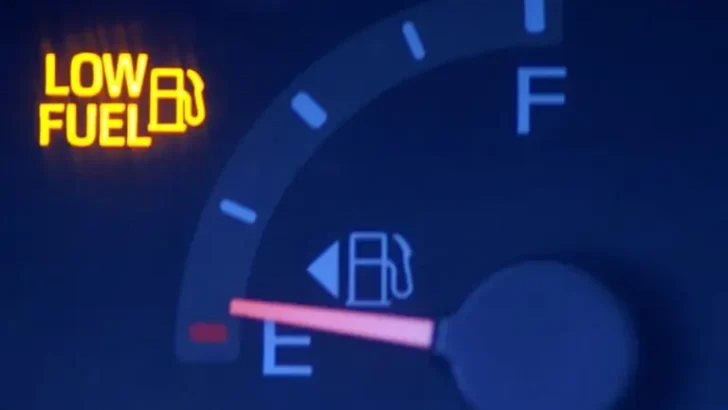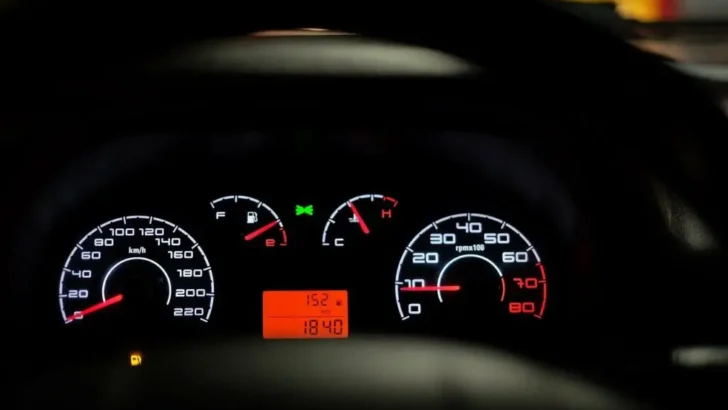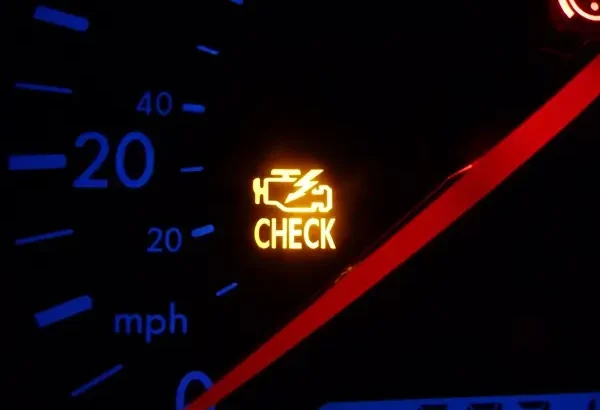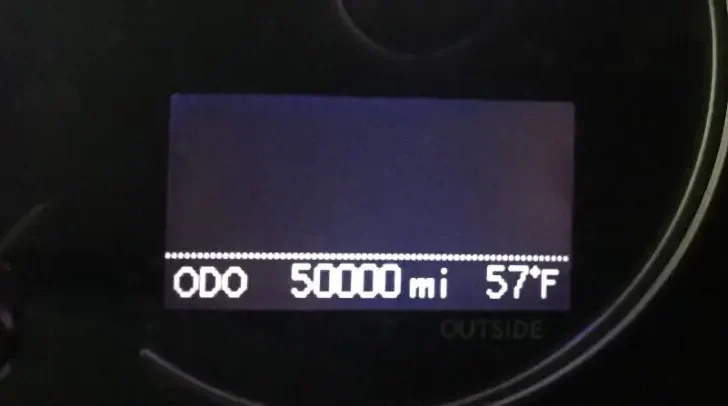Spark plugs play a crucial role in the combustion process. They receive the high voltage electrical current from the ignition coil. The spark plug is used to ignite the mixture of air and fuel in the combustion chamber and helps prevent serious issues with your car.
This ignition occurs a thousand times a minute to keep your car moving while you are driving. If your spark plug is failing, then you may notice that your car is having issues starting or experiencing rough idles.
The list of warning signs can help you detect a faulty spark plug in your car and avoid major malfunctioning issues. Here are 9 symptoms of bad spark plugs and what happens when spark plugs go bad.
- Key Takeaway
- What Are Spark Plugs In a Car
- 9 Symptoms of Bad Spark Plugs
- What Causes Spark Plugs To Go Bad
- How To Test For Bad Spark Plugs
- What Does a Bad Spark Plug Look Like?
- FAQs
- Q: What is a spark plug?
- Q: How can I tell if my spark plugs are bad?
- Q: Can bad spark plugs affect fuel economy?
- Q: How often do spark plugs need to be replaced?
- Q: Can bad spark plugs cause the engine to misfire?
- Q: What should I do if my car has trouble starting?
- Q: Can bad spark plugs damage the catalytic converter?
- Q: Are there any warning signs that indicate the need for spark plug replacement?
- Q: How important are spark plugs for gas mileage?
- In Conclusion
Key Takeaway
- Symptoms of bad spark plugs include a misfiring engine, lower fuel economy, lack of acceleration, trouble starting your car, rough engine idling, compression leakage, poor fuel economy, engine hesitation, and engine running rough or excessive vibration.
- Spark plugs in a car are essential components of the ignition system that generate sparks to ignite the air-fuel mixture in the combustion chamber, enabling the engine to run.
- Spark plugs can go bad due to factors such as normal wear and tear, carbon buildup, oil contamination, improper gap settings, overheating, or prolonged use in harsh conditions.
What Are Spark Plugs In a Car
Spark are crucial component of a car’s ignition system.
They are responsible for creating the electrical spark that ignites the air-fuel mixture in the combustion chamber, initiating the combustion process.
Spark plugs consist of a metal shell with a center electrode and a ground electrode, separated by a small gap.
When high-voltage electricity is sent from the ignition coil to the center electrode, it jumps across the gap to the ground electrode, generating a spark.
This spark ignites the fuel mixture, allowing the engine to run smoothly. Properly functioning spark plugs are essential for optimal engine performance and fuel efficiency.
9 Symptoms of Bad Spark Plugs

- Misfiring engine
- Lower fuel economy
- Lack of acceleration
- Trouble starting your car
- Rough engine idling
- Compression leakage on the spark plug
- Check engine light
- High Mileage
- Excessive vibrations
1. Misfiring engine

Increased engine misfiring is often a clear indication of a faulty spark plug. When dealing with misfiring issues, your engine won’t function properly. Exhaust and emissions will increase and as your engine power decreases, so will your fuel efficiency.
When the electrode of the spark plug is completely worn, the engine will start to misfire. This means that the air and fuel mixture will not get ignited during the power stroke.
This will cause the engine to shake at all speeds. There is a good chance that the check engine light will turn on and trigger misfire codes P0300 through P0312.
Just one misfire of your engine can flood the exhaust system with fuel and could permanently damage your catalytic converter. Replacing the spark plugs will fix this problem.
2. Lower fuel economy

Old spark plugs can drastically decrease your car’s fuel efficiency because of its inability to combust properly. When your spark plugs are old or worn out, the gap between plug electrodes can either increase or completely close. This can negatively impact your fuel economy along with the emission system in your car.
A strong spark is necessary to get the vehicle running efficiently. When a spark plug is worn, more gas will be used to get the vehicle running. A bad spark plug can decrease the fuel economy by 30%. Basically, the money that you are spending on gas due to bad fuel economy can easily pay for spark plug replacement.
3. Lack of acceleration

If your spark plug is damaged or old, it may cause poor acceleration or a delayed response when you press the gas pedal. This delayed response occurs because the engine appears to be overworked due to diminished combustion and is unable to boost your speed instantly.
The lifespan of your spark plugs depends on multiple factors including condition and the type of spark plugs used in your car. Usually, all spark plugs go bad at the same time, and replacing the whole set is the best option.
4. Trouble starting your car
Faulty spark plugs are often overlooked by car owners and can eventually lead to many different car troubles. Many drivers are unaware that worn-out or faulty spark plugs can cause issues starting your car.
The spark plugs are responsible for providing the spark to ignite the air and fuel mixture during the power stroke. When the spark plug electrode is severely worn, there would be a larger electrode gap.
The sparks produced would be weaker due to the wider gap. The vehicle needs a good spark, compression, and air and fuel mixture in order to start.
In this case, a weak spark will make the starting difficult. Extremely bad spark plugs can impact the entire ignition system in your car and sometimes even harsh weather conditions can prevent the engine from starting.
5. Rough engine idling

Rough idling is a clear sign that there is an issue with your spark plugs. When your spark plugs aren’t working properly, your engine will begin to make a rough, grinding sound. Your vehicle will shake and vibrate when you are at a traffic light but can work just fine as soon as you start accelerating.
Anytime you begin to feel vibrations throughout your vehicle, there’s a good chance your car is trying to tell you there is a serious problem with the spark plugs.
You should remove one spark plug and perform a visual inspection. Check the spark plug and see if it’s contaminated with oil. Then, look at the electrode gap and measure it. If the gap is too big, change all of the spark plugs.
6. Compression leakage on the spark plug
Remove some of the spark plugs and perform a visual inspection. Look at the top insulator. If there is a discoloration on the top ceramic insulator, usually a brown and orange color, that means that there is a leakage from the spark plug and a new spark plug is needed.
The ceramic insulator runs the entire length of the spark plug and it is insulating the center electrode from the ground electrode. If the ceramic is cracked, the spark could jump out of the crack and it won’t travel to the electrode and ignite the air and fuel mixture. You can’t fix a spark plug with a cracked ceramic insulator and you will have to replace it.
Inspect the terminal nut and look for any rust. If the terminal nut is rusted, you can sand it down. Also, check the inside of the spark plug wire because there is a good chance that’s rusted too.
While you are holding the spark plug, inspect the electrode as well. If the gap is just too wide, you should replace the spark plug. If the electrode is white, that is an indicator that the engine is running lean and hot. When the electrode is black, that means that the engine is running rich and is using too much gas.
7. Check engine light

Modern cars are equipped with a lot of sensors that will give you a lot of data if you have access to a scanner. The scanner that I use is an Autel OBD (check price on amazon.com). Anyways, when one or more spark plugs are bad, they won’t ignite the air and fuel mixture and will cause your engine to misfire.
When the engine misfires, the check engine light will come on. Usually, the trouble codes associated with misfires are P0300 through P0312. You will need a scan tool to be able to read these codes. If you are not in the mood to get a scan tool, just think about this.
A car that runs with bad spark plugs will spend more fuel because the engine will have to compensate for the lack of power by throwing more fuel into the combustion chamber hoping it will ignite. That fuel usually ends up unburned and exits through the exhaust.
All that money wasted on gas could get you a scan tool that costs around $80 and you will be able to diagnose the issue yourself.
8. High Mileage

All car parts have a lifespan and will have to be changed eventually. The lifespan of the spark plugs is around two and a half years or between 20,000 and 30,000 miles.
If you just got your vehicle and you are not sure if the previous owner changed the spark plugs, go ahead and change them as preventive maintenance. When you should change your spark plugs is listed in your owner manual.
If you owned the car for a long period of time and you have driven more than 30,000 miles, as soon as you notice any of the previous warning signs of a failing spark plug, go ahead and replace the whole set of spark plugs.
The number of spark plugs depends on how many cylinders your engine has. If you have a V8, your engine will have 8 spark plugs and a V6 will have 6 spark plugs.
9. Excessive vibrations
When spark plugs become worn out or damaged, they may not produce a strong and consistent spark necessary for efficient combustion.
As a result, the engine may experience excessive vibrations. You may notice a significant decrease in engine performance, with the car feeling sluggish or lacking power.
What Causes Spark Plugs To Go Bad
- Carbon fouling due to rich air-to-fuel mixture or excessive oil in the combustion
- Overheating of spark plugs Improperly timed engine leading to overheating damage
- Rich or lean air-to-fuel mixture
- Dirty air filters or fuel injectors
- Oil or carbon deposits on spark plugs
- Combustion, contamination, or overheating causing spark plugs to become fouledLack of acceleration
- Hard starts
- Engine misfires
How To Test For Bad Spark Plugs
Here is how to test for bad spark plugs:
Step 1: Gather the necessary tools and materials
Before you begin testing for bad spark plugs, make sure you have the following tools and materials:
- Socket wrench set
- Spark plug socket
- Spark plug gap tool
- Spark plug tester or ignition tester
- Safety goggles
- Gloves (optional)
Step 2: Prepare your vehicle
To ensure your safety and prevent any accidents, follow these steps to prepare your vehicle:
- Park your vehicle on a flat surface and engage the parking brake.
- Turn off the engine and allow it to cool down completely.
- Open the hood and locate the spark plugs. They are usually connected to wires and positioned on the engine cylinder head.
Step 3: Remove the spark plugs
To test the spark plugs, you need to remove them from the engine. Follow these steps:
- Start with one spark plug at a time. Choose a spark plug to test and locate the corresponding wire connected to it.
- Firmly grasp the spark plug wire by the boot (the rubber cover) and gently twist it while pulling upwards to disconnect it from the spark plug.
- Use a socket wrench and a spark plug socket that matches the size of the spark plug to loosen and remove the spark plug from the engine cylinder head. Turn counterclockwise to unscrew it.
Step 4: Inspect the spark plug
Once the spark plug is removed, carefully examine it for any signs of damage or wear. Pay attention to the following:
- The electrode: Check if the electrode is worn down, corroded, or covered in carbon deposits. A damaged or fouled electrode can indicate a bad spark plug.
- The insulator: Inspect the insulator for cracks, chips, or any other visible damage. A damaged insulator can affect the spark plug’s performance.
- The gap: Measure the gap between the center electrode and the ground electrode using a spark plug gap tool. Ensure that the gap matches the manufacturer’s specifications.
Step 5: Perform a spark plug test
To determine if a spark plug is functioning properly, you can use a spark plug tester or an ignition tester. Here’s how to do it:
- Connect the spark plug tester or ignition tester to the spark plug wire.
- Follow the instructions provided with the tester to perform the test. Usually, this involves grounding the tester against the engine block and cranking the engine to generate a spark.
- Observe the spark produced by the tester. It should be consistent, strong, and blue in color. If the spark is weak, inconsistent, or absent, the spark plug may be faulty.
Step 6: Repeat for each spark plug
Continue these steps for each spark plug in your vehicle. Remember to label or keep track of which spark plug belongs to which cylinder so you can reinstall them correctly.
Step 7: Replace or clean the spark plugs
If you find any faulty spark plugs during the inspection or testing process, they should be replaced. Clean any dirty spark plugs using a specialized cleaner or by gently brushing away carbon deposits. Make sure to reinstall the spark plugs correctly, following the manufacturer’s torque specifications.
What Does a Bad Spark Plug Look Like?
A bad spark plug can exhibit brown or grayish-tan deposits on the side electrode, indicating normal wear and tear.
However, signs of a bad spark plug can include broken or worn electrodes, carbon fouling, wet plugs, oil buildup, burn marks, corroded electrodes, or an overall dirty appearance compared to a new spark plug.
White spots on the electrode can also indicate a faulty spark plug that doesn’t produce a strong spark. It is important to carefully inspect the spark plugs for these signs to determine if they need replacement.
FAQs
Q: What is a spark plug?
A: A spark plug is an important component of the ignition system in a car. It creates a spark that ignites the fuel-air mixture in the combustion chamber, allowing the engine to start and run.
Q: How can I tell if my spark plugs are bad?
A: Common signs that your spark plugs may be bad include misfiring engine, poor fuel economy, rough idling, trouble starting the car, and a decrease in acceleration.
Q: Can bad spark plugs affect fuel economy?
A: Yes, bad spark plugs can negatively affect fuel economy. If the spark plugs are not functioning properly, it can lead to incomplete combustion of fuel, resulting in poor fuel efficiency.
Q: How often do spark plugs need to be replaced?
A: The lifespan of spark plugs can vary depending on the type of spark plugs and the driving conditions. In general, spark plugs need to be replaced every 30,000 to 100,000 miles.
Q: Can bad spark plugs cause the engine to misfire?
A: Yes, a faulty spark plug can cause engine misfire, which is characterized by a rough-running engine and a decrease in performance.
Q: What should I do if my car has trouble starting?
A: If your car has trouble starting, it could be a sign of bad spark plugs. It is recommended to have a mechanic check the spark plugs and replace them if necessary.
Q: Can bad spark plugs damage the catalytic converter?
A: Yes, if the spark plugs are not functioning properly, it can result in incomplete combustion and lead to the buildup of unburned fuel in the exhaust system. This can damage the catalytic converter over time.
Q: Are there any warning signs that indicate the need for spark plug replacement?
A: Yes, some warning signs that indicate the need for spark plug replacement include rough idling, decreased fuel economy, trouble starting the engine, and a decrease in acceleration.
Q: How important are spark plugs for gas mileage?
A: Spark plugs play a crucial role in the combustion process of a car’s engine. If the spark plugs are not functioning properly, it can lead to incomplete combustion of fuel, resulting in poor gas mileage.
In Conclusion
In summary, bad spark plugs can cause a wide range of issues in your car.
Paying attention to the nine symptoms explained above and getting regular maintenance checks for your car can help identify if you have a problem with your spark plug.
